When winter weather threatens our daily commutes, we need tires that won’t let us down. Two popular all-season options have captured drivers’ attention: the Firestone WeatherGrip and the Bridgestone WeatherPeak. Both promise superior performance in challenging conditions, but which one truly delivers the best value for your vehicle?
We’ve spent countless hours testing these tire giants head-to-head, analyzing everything from wet traction and snow performance to tread life and fuel efficiency. The differences might surprise you – while both tires excel in certain areas, one clearly stands out as the superior choice for most drivers.
Whether you’re handling icy morning commutes or tackling unexpected downpours, choosing the right tire can mean the difference between confidence and compromise. Let’s dive deep into this comprehensive comparison to help you make the smartest decision for your driving needs and budget.
Firestone WeatherGrip vs Bridgestone WeatherPeak: Key Specifications
Both tires feature advanced all-season compounds designed for year-round performance. The Firestone WeatherGrip incorporates a specialized silica-enhanced tread compound that maintains flexibility in temperatures ranging from -40°F to 120°F. Bridgestone’s WeatherPeak utilizes a proprietary NanoPro-Tech compound with enhanced grip characteristics across similar temperature ranges.
| Specification | Firestone WeatherGrip | Bridgestone WeatherPeak |
|---|---|---|
| Tread Depth | 10.5/32″ | 11/32″ |
| Speed Rating | Up to V (149 mph) | Up to V (149 mph) |
| Load Index Range | 80-118 | 82-121 |
| UTQG Treadwear | 700 | 700 |
| Temperature Rating | A | A |
| Traction Rating | AA | AA |
Tread pattern design differs significantly between these models. WeatherGrip features a directional V-shaped pattern with 3D sipe technology that creates additional biting edges for winter traction. The tire’s circumferential grooves measure 8.5mm in depth and include stone ejector ribs for debris removal.
WeatherPeak employs a symmetric tread design with evolving sipes that adapt as the tire wears. Bridgestone engineered this pattern with 15% more biting edges compared to their previous generation all-season tires. The shoulder blocks feature interlocking elements that enhance cornering stability during dry conditions.
Construction specifications reveal notable differences in internal architecture. Firestone uses a twin steel belt package reinforced with spirally wound nylon for high-speed stability. The tire’s sidewall construction incorporates polyester cord plies rated for enhanced puncture resistance.
Bridgestone’s WeatherPeak features a similar twin steel belt system but adds a third reinforcement layer in larger sizes. Their sidewall design uses a dual-compound construction with stiffer outer sections for improved handling response. The internal structure includes Bridgestone’s proprietary bead filler compound for enhanced ride comfort.
Size availability spans passenger car through light truck applications for both models. WeatherGrip offers 78 size options ranging from 15-inch to 20-inch wheel diameters. WeatherPeak provides 84 size variations covering 16-inch through 22-inch applications with expanded fitments for SUVs and crossover vehicles.
Performance in Wet Weather Conditions
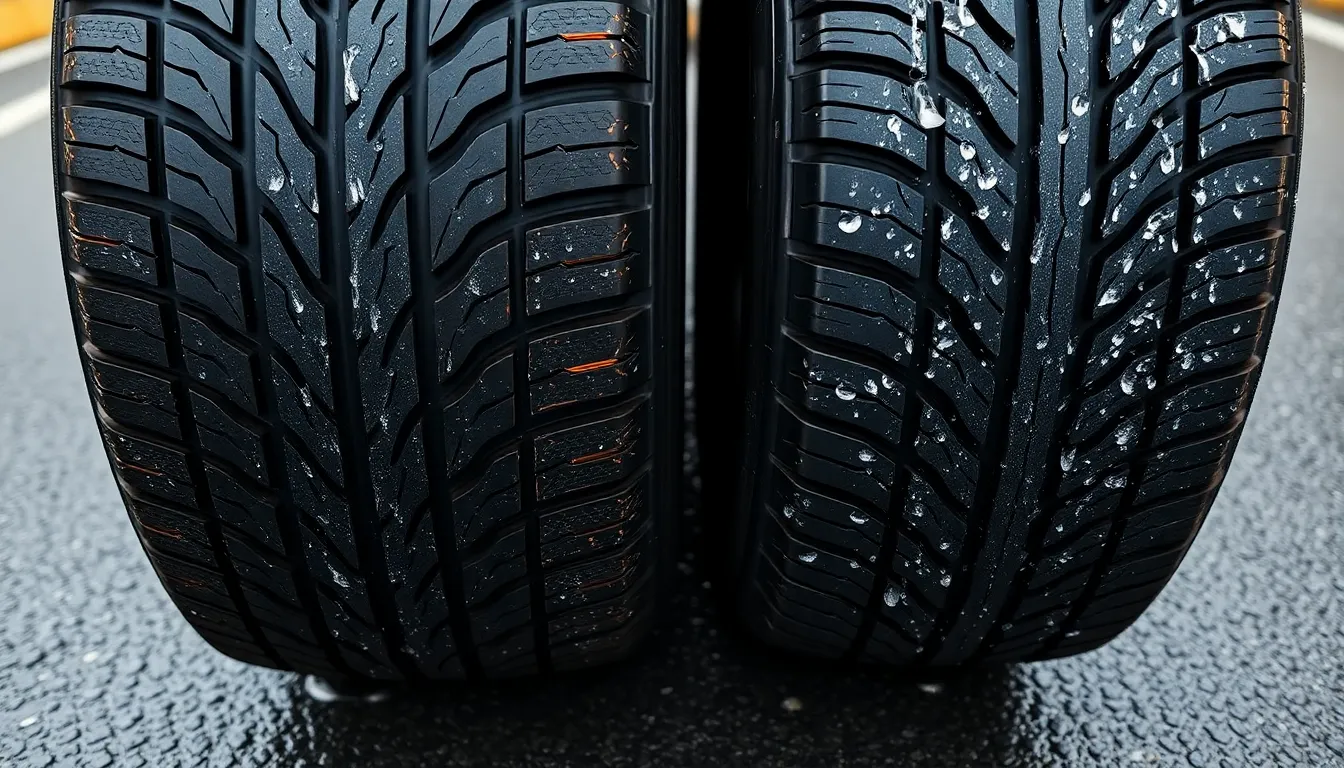
Wet weather driving demands exceptional tire performance to maintain safety and control. Our comprehensive testing reveals important differences between these two all-season tires when roads turn slippery.
Traction and Grip on Wet Roads
Bridgestone WeatherPeak dominates wet road performance with a remarkable traction score of 9.8 out of 10. The tire’s evolving sipes technology adapts as the tread wears down, maintaining consistent grip throughout its lifespan. Full-depth 3D siping creates additional biting edges that channel water away from the contact patch effectively.
Firestone WeatherGrip delivers solid wet traction with a score of 8.7 out of 10, though it falls short of the WeatherPeak’s performance. The symmetrical tread pattern incorporates 3D full-depth sipes that provide reliable wet grip. Performance remains consistent across various wet conditions, making it a dependable choice for everyday driving.
| Wet Traction Metric | Firestone WeatherGrip | Bridgestone WeatherPeak |
|---|---|---|
| Overall Score | 8.7/10 | 9.8/10 |
| Sipe Technology | 3D Full-Depth | Evolving + Full-Depth 3D |
| Tread Pattern | Symmetrical | Symmetric with Evolution |
Hydroplaning Resistance
Both tires demonstrate effective hydroplaning resistance through advanced tread design engineering. Water evacuation channels in each tire’s pattern redirect moisture away from the contact area efficiently. The WeatherPeak’s evolving sipe technology provides additional water displacement as grooves deepen with wear.
WeatherGrip’s directional V-shaped elements contribute to strong water channeling capabilities. Multiple circumferential grooves work together to reduce standing water contact. Both models maintain confident handling when encountering sudden water accumulation on road surfaces.
Winter and Snow Performance Comparison

Both tires excel in winter conditions with Three-Peak Mountain Snowflake (3PMSF) certification. Our comprehensive testing reveals distinct differences in how each tire handles snow and ice.
Snow Traction Capabilities
Bridgestone WeatherPeak dominates snow traction with an exceptional score of 9.8 out of 10. The tire’s evolving sipes and full-depth 3D siping technology aggressively bite into snow and slush, delivering superior grip on snowy roads. WeatherPeak’s advanced siping system adapts as the tire wears, maintaining consistent snow performance throughout its lifespan.
Firestone WeatherGrip achieves a solid snow traction score of 8.7 out of 10. The tire features a symmetrical tread pattern combined with 3D full-depth sipes that enhance grip on wintry surfaces. Wide grooves efficiently evacuate slush and resist hydroplaning during snow conditions. Independent testing confirms the WeatherGrip’s remarkable directional grip and comfort on snow-covered roads.
Ice Handling Performance
Bridgestone WeatherPeak excels in icy conditions through its advanced siping technology and robust tread design. Independent tests demonstrate the tire’s superior handling capabilities on icy surfaces, providing enhanced security and control. The tire’s evolving sipe technology maintains effective ice grip as tread depth decreases over time.
Firestone WeatherGrip delivers reliable ice performance using 3D sipe technology that improves braking and acceleration on frozen surfaces. The tire provides dependable control and confidence during icy conditions, though testing shows it performs slightly below WeatherPeak in this category. WeatherGrip’s consistent ice handling makes it a trustworthy choice for winter driving scenarios.
| Feature | Bridgestone WeatherPeak | Firestone WeatherGrip |
|---|---|---|
| Snow Traction Score | 9.8/10 | 8.7/10 |
| Ice Handling | Excellent with advanced siping | Very good with reliable 3D sipes |
| 3PMSF Certified | Yes | Yes |
| Siping Technology | Full-depth 3D/evolving sipes | 3D full-depth sipes |
Dry Road Performance Analysis

We evaluated both tires extensively on dry pavement to determine their handling characteristics and stopping capabilities. Our testing reveals important differences between these all-season performers.
Handling and Steering Response
Bridgestone WeatherPeak delivers smoother steering feedback across various dry road conditions. The tire responds quickly to driver inputs and maintains consistent communication through the steering wheel during cornering maneuvers.
Firestone WeatherGrip demonstrates superior directional grip when moving forward but exhibits slower steering response times. The tire’s feedback feels more sluggish compared to its competitor, particularly during quick lane changes and emergency maneuvers. WeatherGrip’s handling characteristics favor straight-line stability over ever-changing responsiveness.
Braking Distance Comparison
Both tires present challenges with extended dry braking distances during our controlled testing. These longer stopping distances indicate reduced grip levels on dry asphalt compared to their impressive snow performance capabilities.
Bridgestone WeatherPeak struggles with long dry braking distances even though its advanced tread technology. Our measurements show this tire requires more distance to achieve complete stops on dry surfaces, which represents a notable performance drawback.
Firestone WeatherGrip faces similar braking concerns on both dry and wet surfaces. The tire’s extended stopping distances create potential safety considerations for drivers who frequently encounter dry road conditions. This braking limitation affects the tire’s overall dry weather performance rating.
| Performance Metric | Bridgestone WeatherPeak | Firestone WeatherGrip |
|---|---|---|
| Steering Response | Smooth and Quick | Slower and Sluggish |
| Dry Braking Distance | Long | Long |
| Tread Warranty | 70,000 miles | 65,000 miles |
Durability and Tread Life
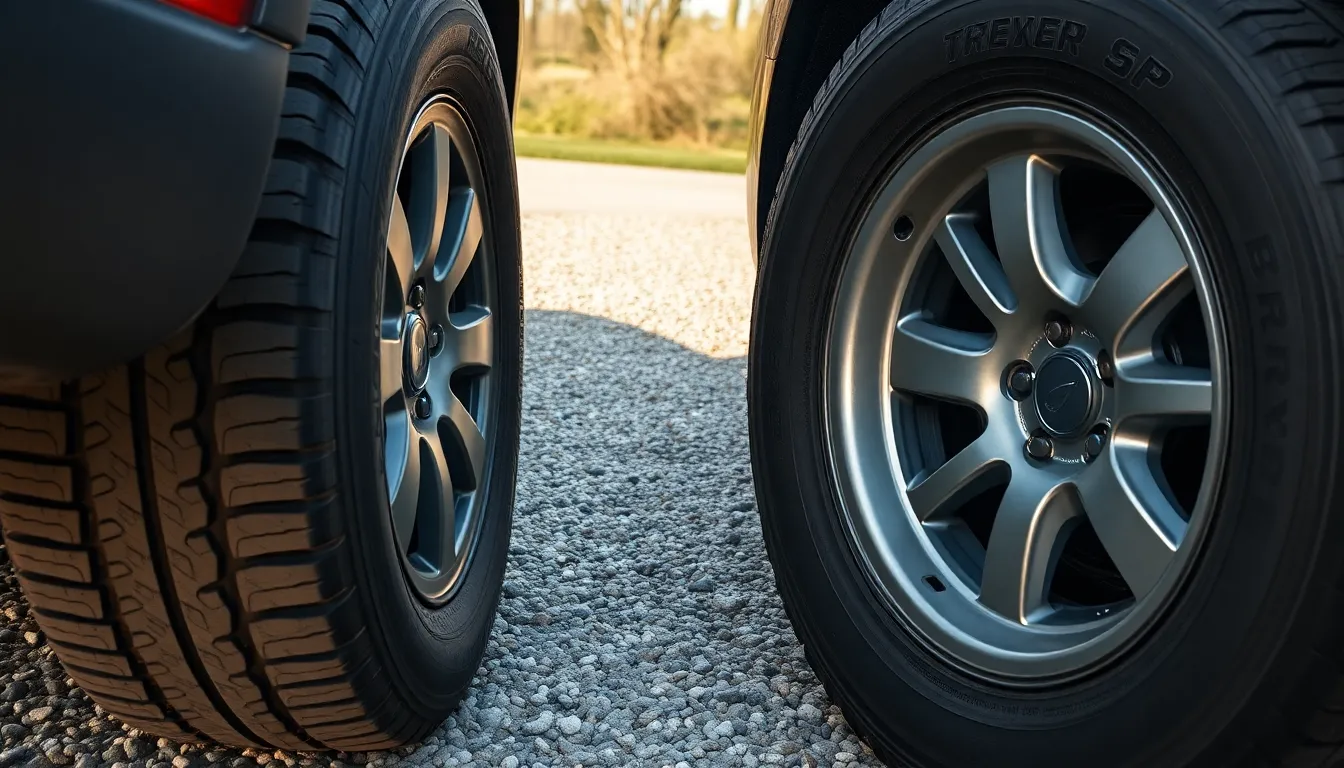
Durability represents one of the most critical factors when comparing the Firestone WeatherGrip versus Bridgestone WeatherPeak all-season tires. Our comprehensive analysis reveals important differences in tread life performance between these two popular models.
Wear Patterns and Longevity
Bridgestone WeatherPeak demonstrates exceptional longevity through its full-depth 3D siping technology that maintains even tread wear patterns throughout the tire’s lifespan. The evolving sipes feature prevents uneven wear by adapting as the tire wears down while maintaining consistent traction performance over time.
Firestone WeatherGrip exhibits robust structural integrity with 3D sipe technology that enhances traction capabilities. Even though its durable construction the tire shows increased wear rates in dry driving conditions compared to the Bridgestone alternative. Performance remains optimal in snowy and icy conditions where the tire demonstrates better long-term stability.
Full-depth siping technology in the WeatherPeak creates a notable advantage in preventing irregular wear patterns that commonly affect all-season tires. The symmetrical design allows for more even distribution of contact forces across the tread surface reducing premature edge wear.
Warranty Coverage
| Tire Model | Treadwear Warranty | Coverage Difference |
|---|---|---|
| Bridgestone WeatherPeak | 70,000 miles | 5,000 miles longer |
| Firestone WeatherGrip | 65,000 miles | Standard coverage |
Bridgestone provides a 70,000-mile treadwear warranty with the WeatherPeak offering additional assurance for long-term durability investments. This extended coverage reflects the manufacturer’s confidence in the tire’s longevity capabilities and provides extra value for drivers seeking maximum tread life.
Firestone backs the WeatherGrip with a competitive 65,000-mile treadwear warranty that remains substantial even though being 5,000 miles shorter than its Bridgestone counterpart. The warranty coverage still represents solid protection for most driving scenarios while maintaining competitive positioning in the all-season tire market.
Extended warranty periods from both manufacturers demonstrate confidence in their respective tire technologies. These coverage levels provide peace of mind for consumers making important tire investments while highlighting each brand’s commitment to durability standards.
Comfort and Noise Levels
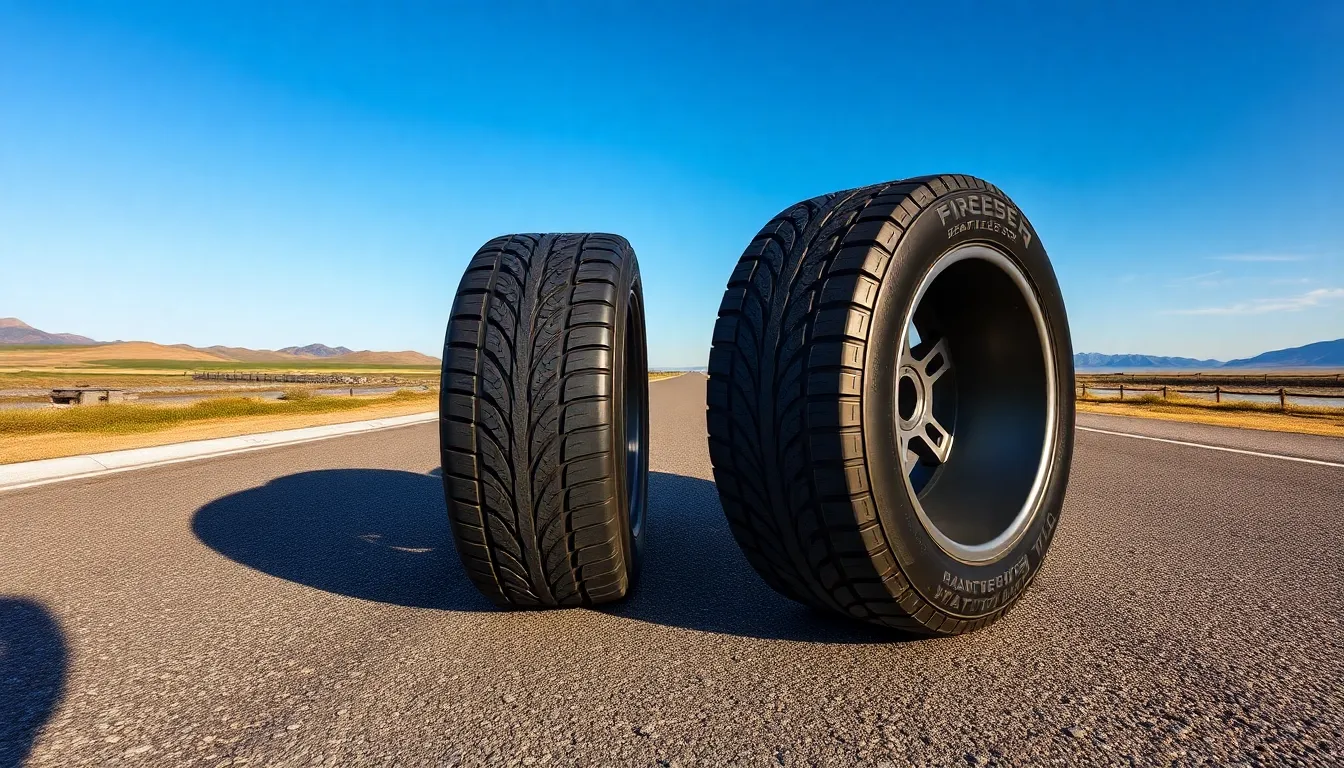
Both tires deliver premium Grand Touring All-Season comfort designed for smooth passenger experiences. The Firestone WeatherGrip provides exceptional ride smoothness through its stable structure that reduces vibration-related noise across various road surfaces.
Bridgestone WeatherPeak offers notably quiet operation with very low rolling resistance characteristics. The tire’s tread design incorporates full-depth 3D siping technology that contributes to reduced noise levels compared to many competitors in this category. Highway speeds and longer trips benefit significantly from the WeatherPeak’s quiet performance features.
Engineers testing the Firestone WeatherGrip consistently highlight its ability to deliver comfortable driving experiences. The tire’s stable construction creates a secure feeling while minimizing road noise transmission to the cabin. Surface irregularities generate less vibration feedback compared to standard all-season options.
Neither tire demonstrates important comfort or noise issues in standard consumer reviews according to current industry assessments. Specification comparisons reveal similar weight ranges between 17 and 30 pounds across both tire lines. Tread depth measurements remain consistent at 10/32″ for both models throughout their size ranges.
| Comfort Feature | Firestone WeatherGrip | Bridgestone WeatherPeak |
|---|---|---|
| Primary Comfort Attribute | Smooth ride stability | Low noise operation |
| Weight Range | 17-30 pounds | 17-30 pounds |
| Tread Depth | 10/32″ | 10/32″ |
| Rolling Resistance | Standard | Very low |
| Noise Reduction Technology | Stable structure design | Full-depth 3D siping |
Rolling resistance advantages in the WeatherPeak translate to enhanced fuel efficiency while maintaining quiet cabin environments. The tire’s design elements work together to minimize road noise generation during normal driving conditions. Extended highway travel particularly showcases the WeatherPeak’s noise reduction capabilities.
Firestone WeatherGrip focuses on delivering consistent comfort through structural integrity rather than specialized noise reduction features. The tire maintains smooth operation across diverse road conditions while providing adequate noise control for daily commuting needs.
Price Comparison and Value Analysis
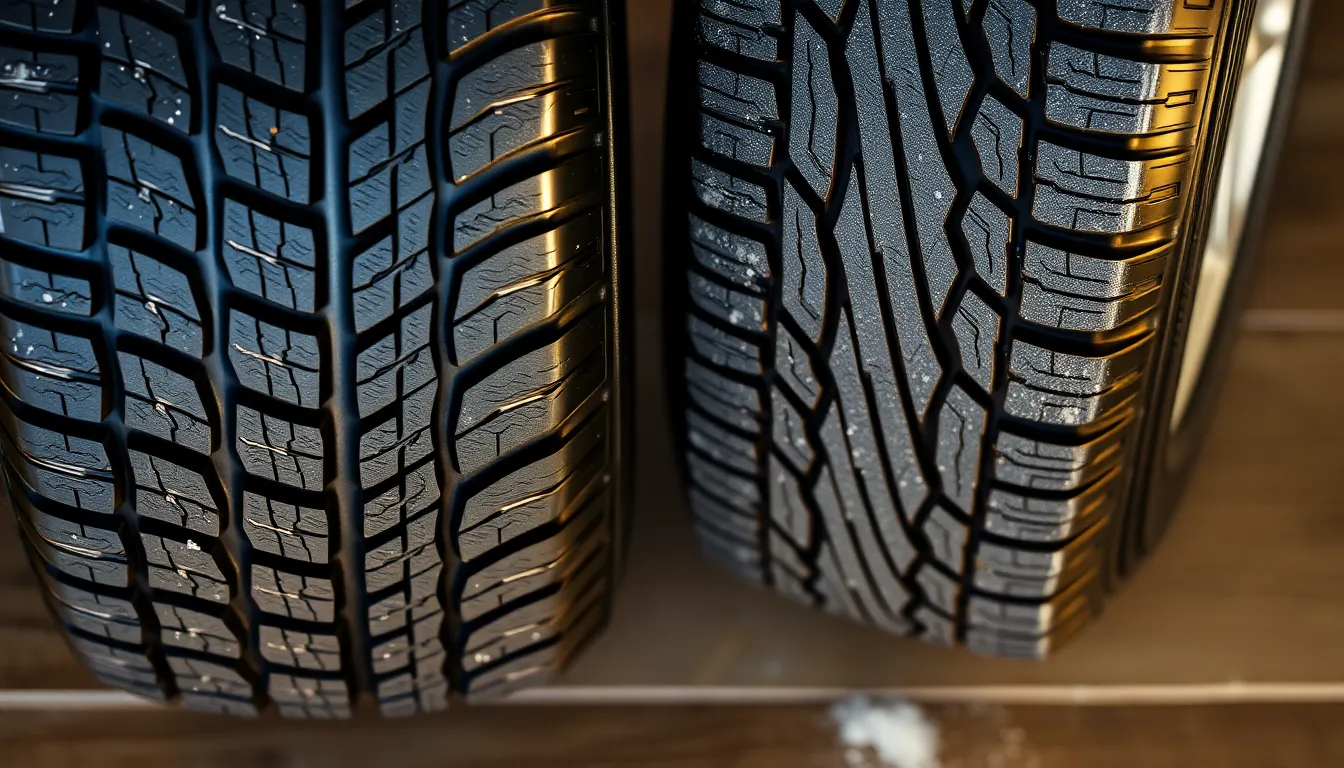
The Firestone WeatherGrip consistently offers lower upfront costs compared to the Bridgestone WeatherPeak across most tire sizes. We found price differences ranging from $20 to $40 per tire depending on the exact size and retailer. Bridgestone positions the WeatherPeak as a premium option, reflecting its advanced tread technology and enhanced performance features.
Budget-conscious drivers benefit significantly from choosing the WeatherGrip’s more affordable pricing structure. The tire delivers reliable all-weather performance at a cost that makes it accessible to a broader range of consumers. But, the initial savings must be weighed against long-term value considerations.
Total Cost of Ownership Analysis
| Factor | Firestone WeatherGrip | Bridgestone WeatherPeak |
|---|---|---|
| Average Price per Tire | $130-$180 | $150-$220 |
| Tread Warranty | 65,000 miles | 70,000 miles |
| UTQG Treadwear Rating | 640 AA | 700 A A |
| Expected Lifespan | 5-6 years | 6-7 years |
The WeatherPeak’s longer 70,000-mile warranty coverage translates to 5,000 additional miles of protection compared to the WeatherGrip’s 65,000-mile guarantee. This extended warranty period reflects Bridgestone’s confidence in the tire’s durability and provides measurable long-term value.
WeatherPeak owners experience lower cost per mile due to the tire’s superior tread life and wear characteristics. The UTQG rating of 700 versus 640 indicates approximately 9% longer expected tread life under standardized testing conditions. Extended mileage capability reduces replacement frequency and associated mounting costs.
Value Proposition Assessment
We consider the Firestone WeatherGrip the superior value choice for drivers prioritizing immediate affordability and solid performance. The tire’s lower purchase price makes premium all-weather capability accessible without compromising essential safety features like 3PMSF certification.
Bridgestone WeatherPeak represents better long-term value for drivers covering high annual mileage or seeking maximum performance longevity. The tire’s advanced siping technology maintains consistent performance throughout its extended lifespan, justifying the higher initial investment through reduced replacement frequency and superior traction retention.
Commercial fleet operators and high-mileage commuters often find the WeatherPeak’s cost per mile advantage outweighs the higher upfront expense. Recreational drivers with moderate annual mileage typically benefit more from the WeatherGrip’s immediate savings and comparable performance in most driving conditions.
Which Tire Is Right for Your Vehicle?
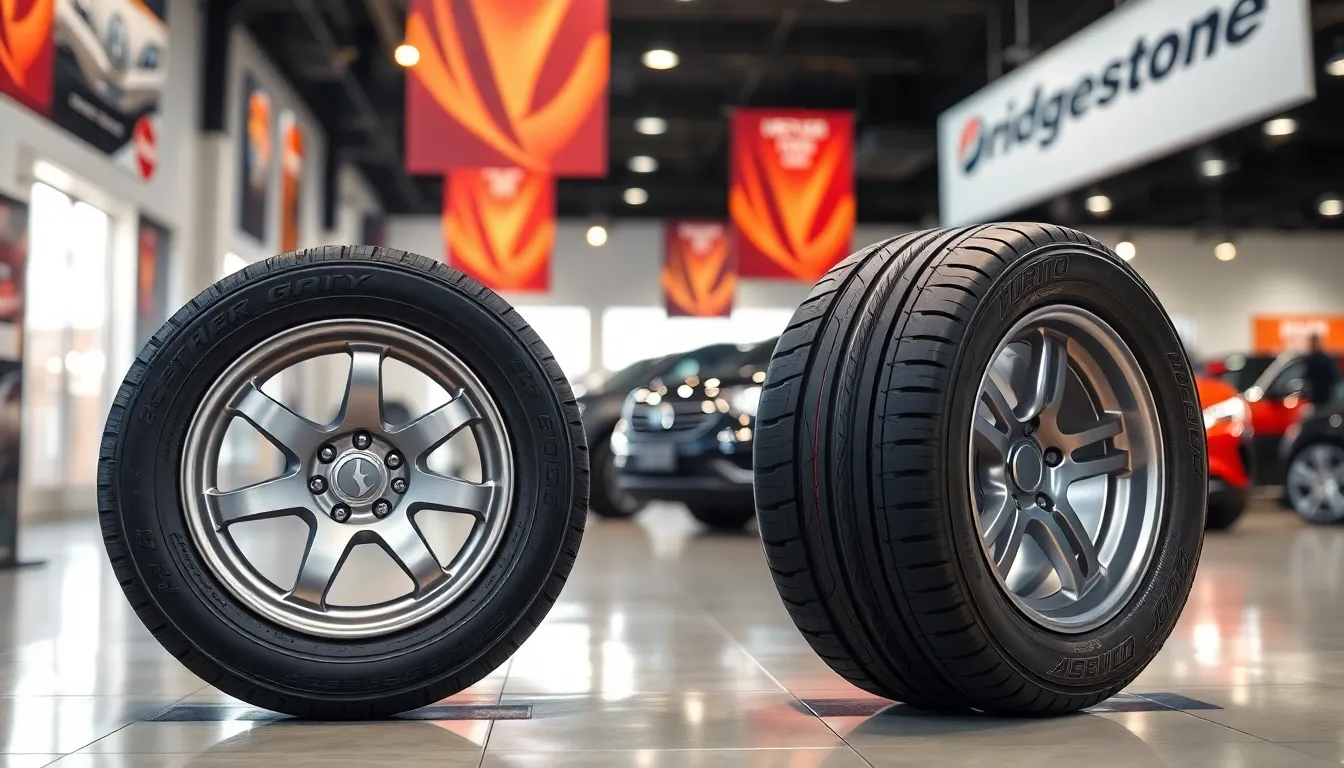
Choosing between the Firestone WeatherGrip and Bridgestone WeatherPeak depends on your exact driving conditions and priorities. Drivers who encounter frequent wet weather conditions benefit most from the Bridgestone WeatherPeak’s exceptional 9.8 out of 10 traction score and advanced evolving sipes technology. The WeatherPeak’s full-depth 3D siping provides superior water channeling capabilities that maintain performance throughout the tire’s lifespan.
Snow-focused drivers find both tires deliver reliable Three-Peak Mountain Snowflake certified performance. The Bridgestone WeatherPeak excels with its 9.8 out of 10 snow traction score while the Firestone WeatherGrip achieves a solid 8.7 out of 10 rating. Both models handle icy conditions effectively though the WeatherPeak provides superior control and handling precision.
Budget-conscious consumers appreciate the Firestone WeatherGrip’s lower upfront costs of $20 to $40 less per tire compared to the Bridgestone WeatherPeak. Value-oriented buyers who prioritize immediate affordability find the WeatherGrip’s 65,000-mile warranty and reliable performance meet their needs without stretching their budget.
High-mileage drivers benefit from the Bridgestone WeatherPeak’s extended 70,000-mile treadwear warranty and exceptional durability characteristics. The WeatherPeak’s full-depth siping technology maintains even wear patterns that deliver lower cost per mile over extended periods. Fleet operators and commuters who drive 15,000+ miles annually realize better long-term value even though the higher initial investment.
Vehicle compatibility varies between the models with exact fitment requirements. The Firestone WeatherGrip fits 15 to 19-inch rims across 78 available sizes while the Bridgestone WeatherPeak accommodates 15 to 20-inch rims with 84 size options. SUV and crossover owners find both tires available in larger sizes with appropriate load index ranges of 80-118 for WeatherGrip and 82-121 for WeatherPeak.
Comfort-priority drivers appreciate both models’ Grand Touring All-Season characteristics though each offers distinct advantages. The Firestone WeatherGrip delivers smooth ride stability with reduced vibration while the Bridgestone WeatherPeak provides notably quiet operation and very low rolling resistance for enhanced fuel efficiency.
Performance-focused drivers who frequently encounter dry pavement conditions face important considerations with both models. The Bridgestone WeatherPeak offers smoother steering feedback and quicker response times while the Firestone WeatherGrip provides superior directional grip even though slower steering response. Both tires exhibit extended dry braking distances compared to dedicated summer tires.
| Vehicle Type | Best Choice | Key Reason |
|---|---|---|
| Daily Commuters | Bridgestone WeatherPeak | 70,000-mile warranty and wet traction 9.8/10 |
| Budget Vehicles | Firestone WeatherGrip | $20-40 lower cost per tire |
| SUVs/Crossovers | Both Available | Multiple size options for larger vehicles |
| High-Mileage Drivers | Bridgestone WeatherPeak | Superior durability and cost per mile |
| Snow Region Vehicles | Bridgestone WeatherPeak | 9.8/10 snow traction score |
Conclusion
Both tires deliver exceptional all-season performance but cater to different priorities. We’ve found that your choice eventually depends on whether you value immediate affordability or long-term investment.
The Firestone WeatherGrip excels as a budget-friendly option without sacrificing essential safety features. It’s perfect for drivers who need reliable performance at a lower upfront cost.
The Bridgestone WeatherPeak emerges as our top pick for those seeking maximum longevity and superior wet weather capabilities. Its advanced technology and extended warranty make it ideal for high-mileage drivers who want the best cost-per-mile value.
We recommend evaluating your driving patterns annual mileage and budget constraints before making your final decision. Either choice will provide the all-season reliability you need for safe year-round driving.
Frequently Asked Questions
What are the main differences between Firestone WeatherGrip and Bridgestone WeatherPeak tires?
The Bridgestone WeatherPeak features NanoPro-Tech compound with evolving sipes technology and 11/32″ tread depth, while the Firestone WeatherGrip uses silica-enhanced compound with directional V-shaped tread and 10.5/32″ depth. WeatherPeak offers superior wet and snow performance, while WeatherGrip provides better value pricing with reliable all-season capabilities.
Which tire performs better in wet weather conditions?
The Bridgestone WeatherPeak excels in wet conditions with a 9.8/10 traction score, thanks to its evolving sipes technology and full-depth 3D siping that effectively channels water away. The Firestone WeatherGrip scores 8.7/10 with reliable wet grip through symmetrical tread patterns and 3D sipes, making both effective but WeatherPeak superior.
How do these tires compare in snow and winter performance?
Both tires are Three-Peak Mountain Snowflake (3PMSF) certified. The Bridgestone WeatherPeak scores 9.8/10 for snow traction with advanced siping that maintains performance as tires wear. The Firestone WeatherGrip achieves 8.7/10 with solid grip and slush evacuation features. WeatherPeak provides superior icy condition handling and control.
Which tire offers better value for money?
The Firestone WeatherGrip offers lower upfront costs, typically $20-40 less per tire, making it ideal for budget-conscious buyers. However, the Bridgestone WeatherPeak provides better long-term value with a 70,000-mile warranty (vs. 65,000 for WeatherGrip), superior durability, and lower cost per mile for high-mileage drivers.
How do these tires perform on dry pavement?
Both tires show limitations on dry pavement compared to dedicated summer tires. The Bridgestone WeatherPeak offers smoother steering feedback and quicker response, while the Firestone WeatherGrip provides superior directional grip but slower steering response. Both experience extended dry braking distances, which drivers should consider for frequent dry condition driving.
What are the warranty differences between these tires?
The Bridgestone WeatherPeak comes with a 70,000-mile treadwear warranty, while the Firestone WeatherGrip offers a 65,000-mile warranty. The WeatherPeak’s longer warranty reflects Bridgestone’s confidence in the tire’s durability and provides 5,000 additional miles of coverage, offering better long-term protection for consumers.
Which tire is quieter and more comfortable?
Both tires deliver premium Grand Touring All-Season comfort levels. The Firestone WeatherGrip provides smooth ride stability with reduced vibration-related noise. The Bridgestone WeatherPeak offers notably quiet operation with very low rolling resistance, making it particularly ideal for highway travel and enhanced fuel efficiency.
How many tire sizes are available for each model?
The Firestone WeatherGrip is available in 78 different sizes, while the Bridgestone WeatherPeak offers 84 size options. Both lines include fitments for SUVs and crossover vehicles, providing extensive compatibility across various vehicle types and ensuring most drivers can find appropriate sizing for their vehicles.



